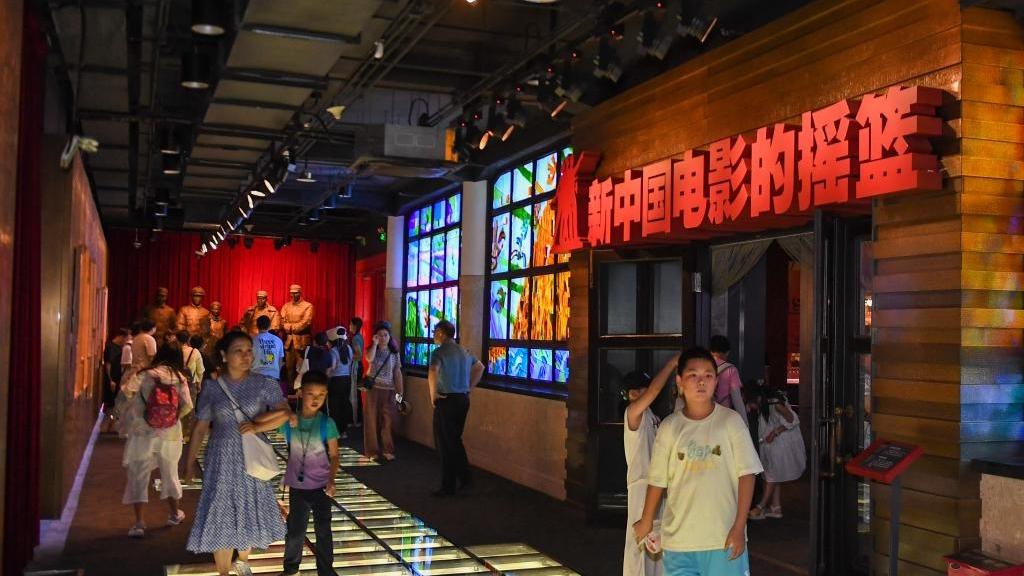Rosanna Binacchi: Culture is key ingredient for building cooperation
Every year, millions of tourists travel to Rome to experience Italy's rich cultural heritage. At the Museum of Civilizations, we met Rosanna Binacchi, who was formerly head of the International Relations Unit at the Italian Ministry of Culture and now a lecturer in Cultural Diplomacy at the Master in Cultural and Public Diplomacy for International Relations at Università Cattolica del Sacro Cuore.

Rosanna Binacchi (Photo/Patrick Shead-Simmonds)
"Museums are central to international cooperation," Binacchi explained. "They curate exhibitions that showcase the art and heritage of different civilizations, engage the public, and foster dialogue and research." She believes that by visiting museums, people are able to empathize with the cultures they encounter. Quoting the renowned Italian author and philosopher Umberto Eco, she added, "People fight because they do not know each other. But once they do, they can share knowledge and work together to find solutions."
Binacchi's connection with China began over 20 years ago when she accompanied a delegation of museum experts from Beijing to visit Italy's major cultural landmarks and museums in cities such as Venice, Milan, Turin, and Naples. That visit sparked a long-standing collaboration with the China Millennium Monument, home to the Beijing World Art Museum. Together, they organized a series of exhibitions on Italian art, tracing a chronological journey from the Renaissance to contemporary design.
The first exhibition was titled "Renaissance, Mirrors of the Time." "The Italian Renaissance is in fact globally recognized. It represents a quintessentially Italian era of artistic production, with world-renowned artists like Leonardo, Michelangelo, and Botticelli," Binacchi noted.
The project was based on a very active collaboration with the Uffizi Gallery in Florence, which allowed, among other things, the loan and exhibition of masterpieces such as Michelangelo's marble statue David Apollo, as well as some original drawings by Leonardo da Vinci.
In Italy, several major exhibitions of Chinese art were held, spanning from ancient China, the Tang Dynasty (618-907), to porcelain from the Shanghai Museum. "The exhibitions were stunning and of great significance," Binacchi recalls. One of the most innovative projects was a joint exhibition comparing the Roman and Chinese empires, highlighting both their intersections and distinctions.
These efforts culminated in an official agreement between Italy and China's cultural authorities, focused on cooperation, conservation, and the fight against illicit trafficking of cultural artifacts. Another agreement between the National Museum of China and Italy's National Museum in Piazza Venezia enabled further mutual exhibitions. For Binacchi, the key to this success lies in two words: "long-term commitment." She takes pride in the steady, state-level efforts made by both countries to build meaningful cultural bridges.
Today, as an academic in the field of cultural diplomacy, Binacchi brings her professional expertise into teaching. She regularly takes her students to museums, operas, and meetings with artists, art directors, and diplomats. Most recently, she led a visit to the Chinese Embassy in Rome, where students met with the cultural advisor to the Chinese ambassador. "It was a valuable experience for students to meet individuals who are deeply engaged in the practice of cultural diplomacy," she said.
For Binacchi, cultural diplomacy plays a vital role in fostering understanding amid global challenges. "Culture is a key ingredient in building cooperation between peoples, countries, and civilizations," she concluded. "It is the only tool that enables us to humanize our relationships, develop empathy, and bridge divides."
(Web editor: Hongyu, Wu Chengliang)










